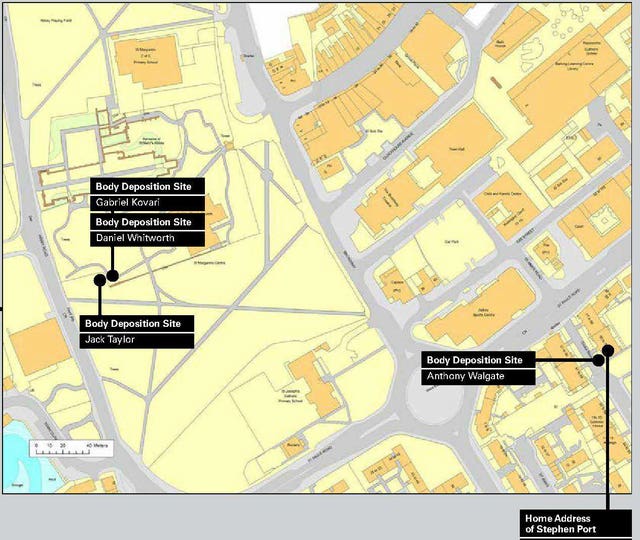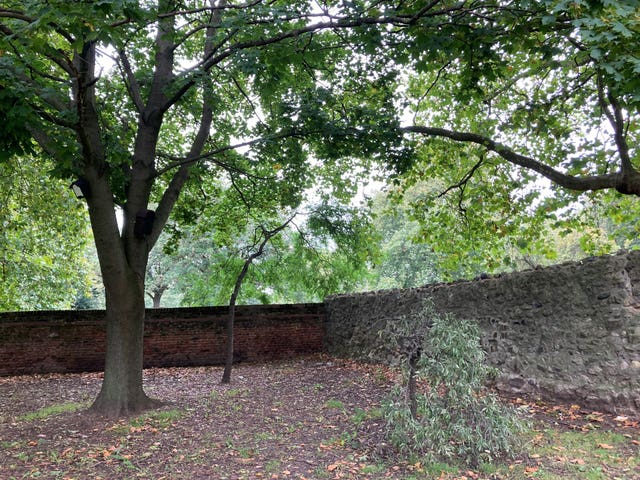Medic ruled death of Port’s first victim ‘probably non-suspicious’, inquest told
Police believe Stephen Port wrapped his victims’ bodies in bed sheets and carried them to the sites where they were found.

A medic pronounced the death of serial killer Stephen Port’s first victim as “probably non-suspicious” even though he had “obviously been moved”, an inquest has heard.
Between June 2014 and September 2015, Port gave his four victims fatal doses of the date rape drug GHB at his flat in Barking, east London, then discarded them just metres away, an inquest has heard.
Police believe 6ft 5in Port wrapped his victims’ bodies in bed sheets and carried them to the sites where they were found.
On Thursday, jurors heard that a paramedic and police officers all thought the death of the first victim, Anthony Walgate, was suspicious – but were later contradicted by the view of a forensic medical examiner.

London Ambulance Service had received a call from Port at 4.05am on June 19 2014 and arrived in Cooke Street nine minutes later.
In the 999 call, which was played to the jury, Port, who did not give his name, denied seeing what happened to the collapsed man, saying he did not know if he was awake or breathing.
He told the operator: “Looks like he’s collapsed or had a seizure or something, just drunk.
“I was just driving in my car and just saw him lying on the floor, just got out, had a look at him.”

He said: “When I got to the body it was positioned cross-legged in an unnatural position from what the call was given as a possible seizure.
“My first impression was I could see the patient was deceased but if he had a seizure he would not be positioned as he was.”
Mr Walgate had some blood around his mouth and had been “dead for quite some time”, Mr Neil said.
Asked why he thought it was suspicious, he added: “The way it was positioned, it did not add up to the call I was given and because it was a young male, that’s why it appeared suspicious to me.
“If someone had a seizure they would not be sat upright with their legs crossed. I have never seen that in my career.”
In statements read to the court, the first officers on the scene said the death was “suspicious” and declared a “critical incident” with a tent erected over the body, which had been covered in a red blanket.
The officers were informed the ambulance service received a call from a passer-by who did not leave their name.
Forensic medical examiner Dr Mark Munro, who arrived later that morning, confirmed Mr Walgate’s death and recorded it was “probably non-suspicious” on a form, the inquest was told.
Dr Munro also noted Mr Walgate had blood in his mouth and a bitten tongue, raising the possibility of epilepsy.
In a later statement in 2016, he said drugs might have being involved but the doctor insisted he would have mentioned that to police at the time.
On the positioning of the body, he said: “If somebody had an epileptic fit they would not be propped against the wall, they would be flat out on the floor.
“That was the extraordinary thing about the whole scenario.”

Andrew O’Connor QC, counsel to the coroner, asked: “Do you think you would have discussed whether the death was suspicious with the police?
The witness said: “Yes, definitely.”
Mr O’Connor said: “You would have told them that the death was probably not suspicious in your opinion?”
Dr Munro replied: “Yes, I must have done because I wrote it on the form.”
Despite being convicted of lying to police about the circumstances of Mr Walgate’s death, Port went on to kill three more men before he was caught, the court has heard.
Earlier, inquest jurors left Barking Town Hall to view the crime scenes with coroner Sarah Munro QC, lawyers for police and bereaved families, and members of the press.
The 11 men and women were invited to examine each of the areas where the four victims had been dumped and compare them with crime scene photographs of the bodies in situ.
With an escort of uniformed police, the jury was first guided to outside Port’s former flat in Cooke Street to see where Mr Walgate was found.
Jurors then walked to St Margaret’s churchyard, some 300 metres from Cooke Street.

Mr Kovari’s body was found at 9.01am on August 28 and Mr Whitworth was discovered at 11.20am on September 20, just a couple of metres away.
The final victim, aspiring police officer Jack Taylor, 25, was found by a parks worker on the other side of the stone wall at 1.10pm on September 14 2015.
Ms Munro said the worker flagged down two Metropolitan Police officers who observed “no obvious signs of life”.
Mr Taylor was pronounced dead at 4pm by a forensic medical examiner, jurors were told.
During the 30-minute site visit, jurors walked past puzzled members of the public and a school where children could be heard in the playground.

On whether GHB was found on the bodies, Ms Munro said bottles were retrieved from all but Mr Kovari.
She said the exact route Port took to dispose of the bodies was unknown, but added they had walked one possible way.
The court had previously heard how Mr Whitworth was found holding a suicide note in his hand, which had been faked by Port in an effort to cover up Mr Kovari’s death.
At the time, a friend of Mr Kovari had queried whether there was a link to the death of Mr Walgate – but that was dismissed by police.
Earlier inquests, later quashed by the High Court, reached open conclusions as a coroner could not rule out third party involvement in Mr Whitworth’s case.
In 2016, Port, now 46, was found guilty at the Old Bailey of the four murders and sentenced to a whole life order.
The long-awaited inquest into the deaths is examining whether police made mistakes in their investigation which could have cost lives by failing to stop Port sooner.
The inquests were adjourned until Friday.





